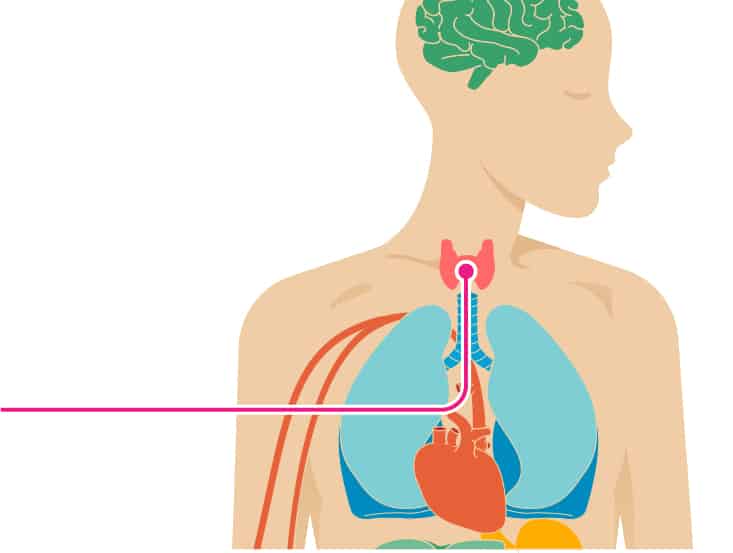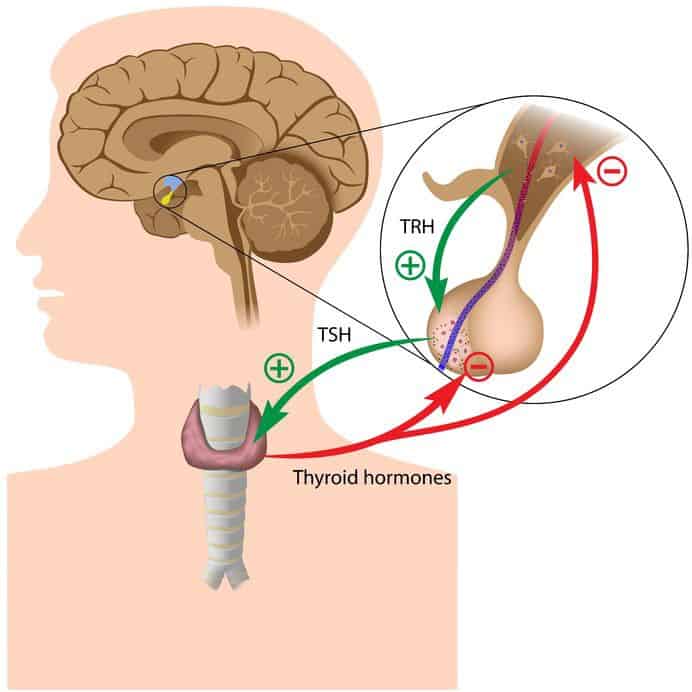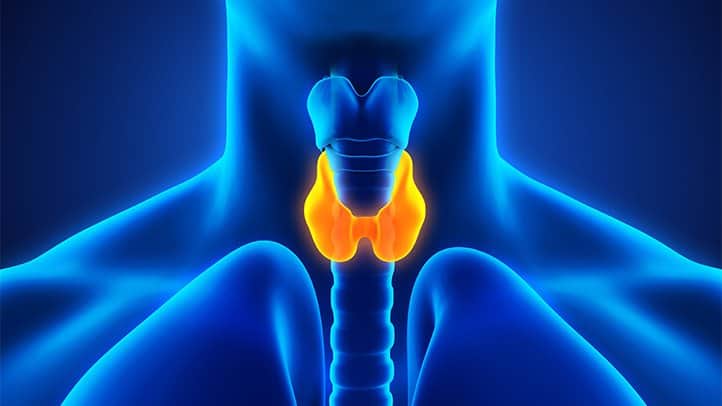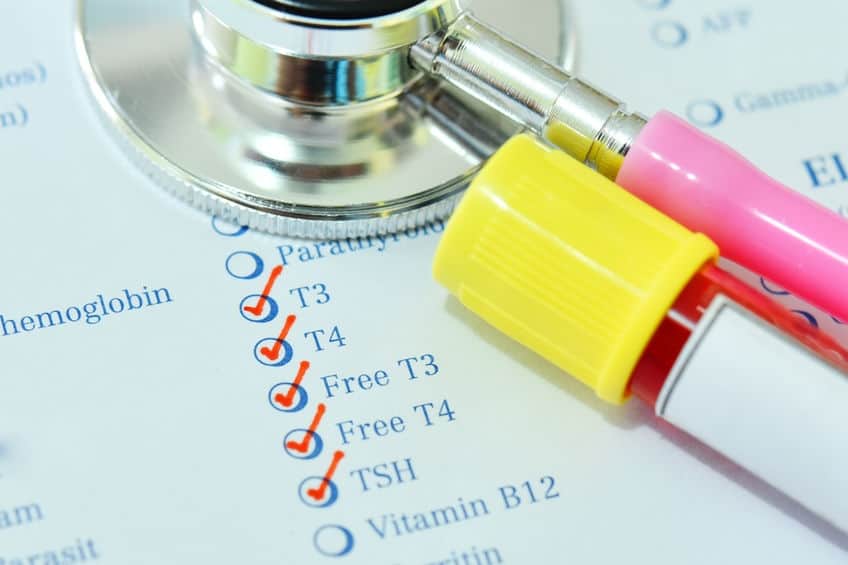What Is Hypothyroidism?
The opposite is hyperthyroidism, where the thyroid produces too much thyroid hormone. However, the link between hyperthyroidism and hypothyroidism is complex, and one can lead to the other, in certain circumstances.
It is an endocrine gland, made up of special cells that make hormones. Hormones are chemical messengers that relay information to the organs and tissues of the body, controlling processes such as metabolism, growth, and mood.
The production of thyroid hormones is regulated by thyroid-stimulating hormone (TSH), which is made by the pituitary gland. Hypothyroidism occurs when your body doesn’t produce enough thyroid hormones.
The thyroid gland is found in the front of the neck below the larynx, or voice box, and has two lobes, one on each side of the windpipe. The thyroid is a small, butterfly-shaped gland that sits at the front of your neck.
Your thyroid is responsible for providing energy to nearly every organ in your body. It controls functions like how your heart beats and how your digestive system works. Without the right amount of thyroid hormones, your body’s natural functions begin to slow down.
Also called underactive thyroid, hypothyroidism affects women more frequently than men. It commonly affects people over the age of 60 but can begin at any age. Thyroid hormones regulate metabolism or the way the body uses energy. If thyroxine levels are low, many of the body’s functions slow down.
Subclinical hypothyroidism refers to a state in which people do not have symptoms of hypothyroidism and have a normal amount of thyroid hormone in their blood. The only abnormality is an increased TSH on the person’s blood work.
This implies that the pituitary gland is working extra hard to maintain a normal circulating thyroid hormone level and that the thyroid gland requires extra stimulation by the pituitary to produce adequate hormones.
Most people with subclinical hypothyroidism can expect the disease to progress to obvious hypothyroidism, in which symptoms and signs occur.
Causes Of Hypothyroidism
Anyone can develop hypothyroidism, but you’re at higher risk for it if you’re a woman and older than 60 years.
Other risk factors for hypothyroidism include:
- A history of exposure to radiation to your neck or upper chest
- Having a family history of thyroid disease
- Taking supplements and medications that affect the thyroid, including iodine and lithium
- Other autoimmune diseases (such as rheumatoid arthritis, type 1 diabetes, or lupus)
- Having undergone thyroid surgery
- Have been pregnant or delivered a baby within the past six months
Severe Iodine Deficiency
Iodine is an essential mineral for thyroid function. Iodine deficiency is one of the most common causes of goiter development or abnormal enlargement of the thyroid gland. Your thyroid gland must have correct amounts of the mineral iodine in order to make thyroid hormones.
Consuming too little iodine can lead to hypothyroidism. Too much iodine may also cause or worsen hypothyroidism. Iodine is found in foods such as seaweed, seafood, and iodized salt.
In areas of the world where there is an iodine deficiency in the diet, severe hypothyroidism occurs in about 5% to 15% of the population. Examples of these areas include Zaire, Ecuador, India, and Chile.
People with hypothyroidism should discuss any major dietary changes with their doctor, especially when starting a high fiber diet, or eating lots of soy or cruciferous vegetables. Diet can affect the way in which the body absorbs thyroid medication.
Signs and Symptoms of Hypothyroidism
The signs and symptoms of hypothyroidism vary from person to person. The severity of the condition also affects which signs and symptoms appear and when. The symptoms are also sometimes difficult to identify.
Early symptoms can include weight gain and fatigue. Both become more common as you age, regardless of your thyroid’s health. You may not realize that these changes are related to your thyroid until more symptoms appear.
For most people, symptoms of the condition progress gradually over many years. As the thyroid slows more and more, the symptoms may become more easily identified. Of course, many of these symptoms also become more common with age in general.
The most common signs and symptoms of hypothyroidism include:
- Fatigue
- Depression
- Constipation
- Feeling cold
- Dry skin
- Weight gain
- Muscle weakness
- Decreased sweating
- Slowed heart rate
- Elevated blood cholesterol
- Pain and stiffness in your joints
- Dry, thinning hair
- Impaired memory
- Fertility difficulties or menstrual changes
- Muscle stiffness, aches, and tenderness
- Hoarseness
- Puffy, sensitive face
Complications With Untreated Hypothyroidism
The risks of living with hypothyroidism include hypothermia, cognitive impairment, coronary artery disease, and hyperlipidemia. Patients with hyperlipidemia and coronary artery disease should be especially aware of their hypothyroidism risk.
Other potential long-term complications include:
- An abnormal enlargement of the thyroid gland (goiter)
- Inability to lose weight
- Nerve damage in the arms, legs, and feet (peripheral neuropathy)
- Depression due to slower mental functioning
- Infertility in women is due to the inability to ovulate from a lack of thyroid hormones
- Heart issues, including high cholesterol and heart disease
- Delayed physical and intellectual development in babies born to mothers who are hypothyroid
What To Expect From Thyroid Care Diet Protocol With Livofy
- The benefit of a low glycemic diet is that it helps to balance blood sugar spikes, which cause dietary stress. Consistently high blood sugar can be inflammatory as well, so lowering and balancing your blood sugar reduces overall stress on your hormones, including your thyroid hormones.
- A diet full of foods low in glycemic index focuses on reducing inflammation and healing your immune system further helping you to better manage your hypothyroidism and symptoms related to the same.
- Dealing with hypothyroidism tends to require a little more structure in one’s food choices in order to manage weight. A low-glycemic diet provides that needed structure, while still allowing for variety.
- Eating a low-glycemic diet and following healthy-eating strategies will help you control your calories, eat high-fiber, high-nutrient foods, and manage your weight more successfully.
Here’s a 7-Day Diet Chart For Thyroid that you can follow very easily, Enjoy!
| Day/Slot | Breakfast | Lunch | Snack | Dinner |
| Monday | Boiled Egg with Veggies | Sauteed Garlic Veggies | Black coffee+ 5 Almonds | Grilled Chicken+ Veggies |
| Tuesday | Spinach Omelette | Paneer Chaat | 6 Berries | Garlic Paneer |
| Wednesday | Bharwa Parantha | Caulirice + Baingan Bartha | Creamy Mushroom Soup | Lemon pepper Paneer |
| Thursday | Poha With Veggies | Malai Paneer Tikka | Green Tea+ 5 Almonds | Salad Sandwich |
| Friday | Sunny-Side Up Egg | Butter Chicken + Coconut Roti | Bulletproof Coffee | Goan Fish Curry |
| Saturday | Chia Seed Pudding | Chicken Soup | Lettuce Soup | Anda Masala |
| Sunday | Keto Oatmeal | Mushroom Paneer | Soda Mojito | Paneer 65 |
So what’s stopping you from starting your own transformation journey? Get yourself started today and Stay tuned for more content on transformation stories, health management, and recipes! Also, don’t forget to follow us on Instagram and Youtube for the daily dose of Healthcare & Lifestyle!









